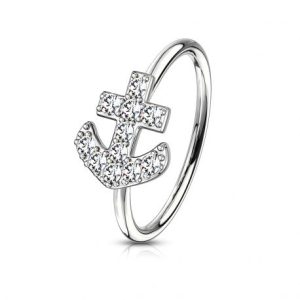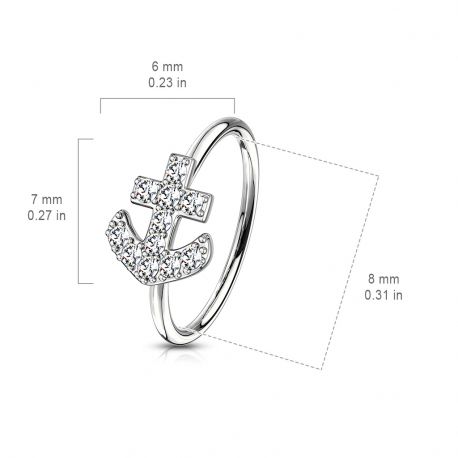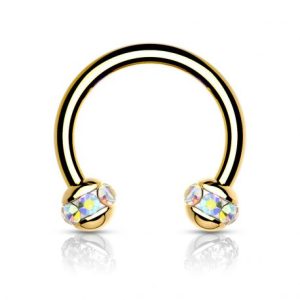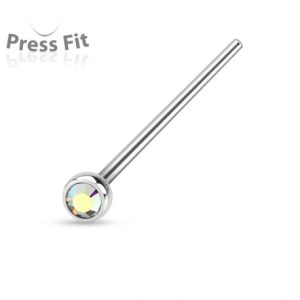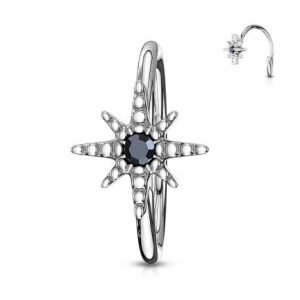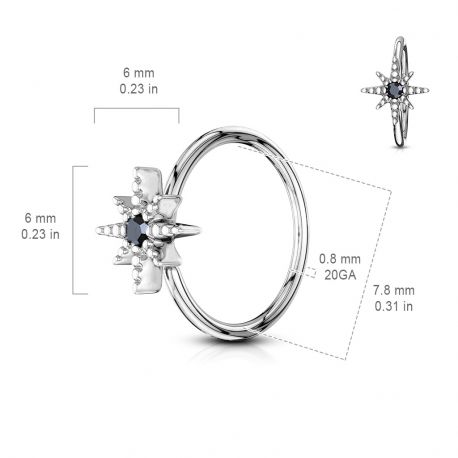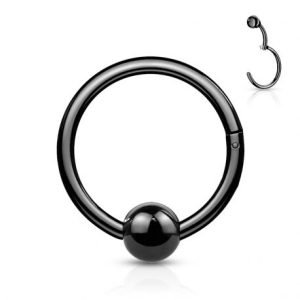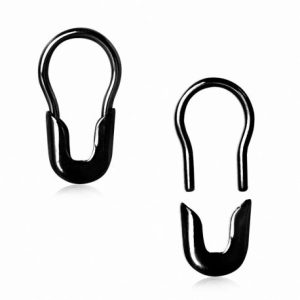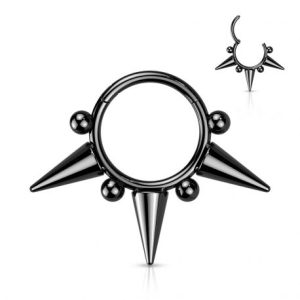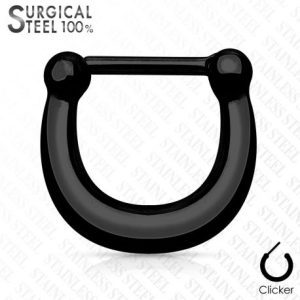Nose Piercing
Exploring the World of Nose Piercings: Types, Healing Time, and Costs
Nose piercing is a popular form of body art that has been around for centuries. It is a way to express oneself and add a unique touch to one’s appearance. In this article, we will discuss the history of nose piercing, the types of nose piercings, the procedure of nose piercing, precautions to take before getting a nose piercing, aftercare of nose piercing, healing time for nose piercing, potential risks and complications of nose piercing, and removing nose piercing.
History of nose piercing
Nose piercing has a rich cultural history that dates back to ancient times. It has been practiced in various cultures, including Indian, Middle Eastern, African, and South American cultures. In India, nose piercing is a symbol of marriage, and it is believed to increase fertility. In the Middle East, nose piercing is a sign of wealth and status. In South America, nose piercing is a symbol of strength and courage.
Types of nose piercings
There are various types of nose piercings, each with its unique style and placement.
| Placement | Pain Level | Healing Time | Pricing |
|---|---|---|---|
| Nostril Piercing | 3/10 | 4-6 months | $25 – $50 |
| Septum Piercing | 5/10 | 6-8 weeks | $40 – $80 |
| Bridge Piercing | 7/10 | 8-12 weeks | $60 – $100 |
| Nasallang Piercing | 7/10 | 6-9 months | $80 – $120 |
| Double Nostril Piercing – Opposite Side | 4/10 | 4-6 months | $50 – $80 |
| Double Nostril Piercing – Same Side | 4/10 | 4-6 months | $50 – $80 |
| Austin Bar Piercing | 5/10 | 8-10 weeks | $40 – $60 |
| Rhinoceros (Rhino) Piercing | 7/10 | 9-12 months | $100 – $150 |
| Septril Piercing | 6/10 | 6-9 months | $70 – $100 |
| Triple Nostril Piercing | 5/10 | 4-6 months | $75 – $90 |
Please note that these are general estimates and pricing may vary depending on location, piercer experience, and the type of jewelry used. It is important to do your research and choose a reputable piercer to ensure a safe and successful piercing experience.
Some popular types of nose piercings are:
-
Nostril piercing
A nostril piercing is a type of nose piercing that involves piercing the skin and cartilage on the side of the nostril. The piercing is typically done with a hollow needle, and the jewelry used can vary in size and style, such as a stud, hoop, or screw. Nostril piercings are the most popular and common type of nose piercing. They are generally less painful than other types of nose piercings due to the thinner and softer tissue in the area.
-
Septum piercing
A septum piercing is a type of nose piercing that involves piercing the thin strip of tissue that separates the nostrils, called the septum. The piercing is typically done with a hollow needle, and the jewelry used can vary in size and style, such as a circular barbell or captive bead ring. The placement of the piercing allows for easy hiding of the jewelry, making it a popular choice for those with work or school restrictions. Septum piercings can be more painful than other types of nose piercings due to the location of the piercing.
-
Bridge piercing
A bridge piercing is a type of nose piercing that involves piercing the skin on the bridge of the nose, between the eyes. The piercing is typically done with a straight or curved barbell, which sits horizontally across the bridge of the nose, between the two eye sockets. The jewelry used for a bridge piercing can vary in size and style, depending on personal preference and anatomy.
-
Nasallang piercing
The jewelry used for a Nasallang piercing typically consists of a straight or curved barbell, which goes through both nostrils and the septum at once, creating a single piece of jewelry that spans the entire length of the nose.
-
Austin bar piercing
An Austin Bar piercing is a unique type of nose piercing that involves piercing the tip of the nose without going through the septum or nasal cavity. The jewelry used for an Austin Bar piercing typically consists of a straight or curved barbell that goes through the tip of the nose, with the ends of the barbell resting inside each nostril.
-
Double nose piercing
A double nose piercing is a type of nose piercing that involves having two separate piercings on one side of the nostril or one piercing on each side. The piercings are typically placed parallel to each other or in a stacked formation.Double nose piercings are a popular choice for those who want to add a unique touch to their appearance or want to balance out the look of their nose. The piercings can be done with a hollow needle, and the jewelry used can vary in size and style, such as studs or hoops.
-
Double nose piercing opposite side
In this distinct style, nostril piercings are featured on both the left and right sides of the nose, producing a harmonious and balanced look. This allows for creative experimentation with a variety of jewelry pairings to achieve a one-of-a-kind appearance.
-
Same side double nose piercing
This alternative involves having two piercings on a single side of the nose, either aligned vertically or situated side by side. This striking and attention-grabbing design lets you customize your look by mixing and matching an array of jewelry choices.
-
Rhino piercing
This is a unique variation of nose piercing that involves piercing the tip of the nose and exiting through the skin above the septum, resembling a rhinoceros horn. It is a more complex and rare type of nose piercing that requires a skilled and experienced piercer.
-
Septril Piercing
A fusion of a stretched septum piercing and a cartilage piercing at the nose tip, the septril piercing creates a tunnel-like effect. To achieve this look, an initial septum piercing must be stretched gradually before the septril piercing can be done.
-
Triple Nostril Piercing
Elevating the double nostril piercing concept, the triple nostril piercing features three piercings on one side of the nose. This daring choice enables greater personalization through a diverse range of jewelry combinations.
Procedure of nose piercing
The nose piercing procedure involves several steps. The piercer will first clean the area with an antiseptic solution. Then, they will mark the area where the piercing will be done. Once the client approves the placement, the piercer will use a sterilized needle to pierce the skin. After the piercing is done, the piercer will insert the jewelry, which is usually a small stud or hoop.
Precautions to take before getting a nose piercing
Before getting a nose piercing, it is important to take some precautions to minimize the risk of infection and complications. It is advisable to get the piercing done from a reputable and licensed piercer. The client should ensure that the piercing equipment is sterilized, and the piercer uses a fresh needle for each piercing. The client should also avoid getting a nose piercing if they have a cold or any other respiratory infection.
Aftercare of nose piercing
Proper aftercare is crucial to ensure that the piercing heals well and to prevent infections. The client should clean the piercing with saline solution or mild soap and water twice a day. They should avoid touching the piercing with dirty hands and avoid swimming or soaking the piercing in water. It is also essential to avoid wearing tight-fitting clothes or hats that may irritate the piercing.
When done properly, nose piercings can look beautiful and last for many years; however, there are risks associated with this procedure that need to be taken into consideration. To help prevent infection or any other complications, there are some important steps that should be taken after having a nose piercing:
- Cleaning the area regularly: It is essential to keep the pierced area clean during healing by regularly washing with mild soap and water. If using an antiseptic solution or ointment, consult a doctor or piercing specialist first.
- Choosing appropriate jewelry material: The type of material used to make nose rings can also play an important role in preventing infection. For example, gold or stainless steel pieces are generally considered safer than nickel-based metals.
- Avoiding infection risk factors: Certain hygiene practices such as touching the piercing without washing hands first can increase risk for infection. Also be mindful not to sleep face down on pillows during healing as this can also cause irritation.
Healing time for nose piercing
The healing time for nose piercing varies depending on the type of piercing and individual factors. Generally, nostril piercings take about 4-6 months to heal completely, while septum piercings can take up to 8-10 weeks. It is important to avoid changing the jewelry during the healing process as this can delay the healing or cause complications.
Cost of a Nose Piercing
The cost of a nose piercing can vary depending on several factors, such as the location of the piercing, the reputation and experience of the piercer, and the type of jewelry used. On average, a nostril piercing can cost between $30 to $80, while a septum piercing can cost between $50 to $100. However, the cost can be higher or lower depending on the piercer and location.
It is important to choose a reputable and licensed piercer when considering a nose piercing, rather than choosing based on cost alone. A reputable piercer will use high-quality materials and follow proper safety and hygiene practices, reducing the risk of infection and complications.
In addition to the initial cost of the piercing, there may be additional costs for the jewelry. The type and quality of jewelry can affect the cost, and some people may choose to upgrade to higher-quality materials, such as gold or titanium, which can be more expensive.
Materials for nose piercings jewelry
Choosing the right material for your nose piercing is essential for the healing process and overall appearance.
-
Surgical Stainless Steel
Surgical stainless steel is the most common material used for nose piercings. It is affordable, durable, and hypoallergenic. Surgical stainless steel is an alloy of steel and chromium, making it resistant to corrosion and rust. The downside to using surgical stainless steel is that it contains nickel, which can cause an allergic reaction in some people.
-
Titanium
Titanium is an excellent alternative to surgical stainless steel. It is also hypoallergenic, durable, and lightweight. It is an ideal choice for people with sensitive skin or those who have allergies to nickel. Titanium is more expensive than surgical stainless steel, but it is worth the investment.
-
Gold
Gold is a popular choice for nose piercings because of its aesthetic appeal. It comes in different colors and carats, making it a versatile material. However, it is essential to note that not all gold is suitable for nose piercings. The gold used for nose piercings should be 14k or higher to avoid any allergic reactions or infections.
Potential risks and complications of nose piercing
While nose piercing is generally safe, there are potential risks and complications that one should be aware of. Infection is the most common risk associated with nose piercing. The client may experience redness, swelling, and discharge from the piercing. Other potential complications include allergic reactions to the jewelry, bleeding, scarring, and keloids. It is important to seek medical attention if one experiences any of these symptoms.
Removing nose piercing
If one decides to remove their nose piercing, it is essential to do it safely to avoid any damage or complications. The piercing should be removed after the healing process is complete. To remove the piercing, one should wash their hands thoroughly and gently pull the jewelry out of the piercing hole. If the jewelry is stuck, one should not force it out but seek the help of a professional piercer.
Looking for a fresh and edgy way to express yourself?
Our collection of nose piercings is the perfect way to add some personality to your look. Whether you’re looking for a subtle stud or a statement hoop, we’ve got you covered. Our nose piercings are crafted with the highest quality materials, ensuring that you’ll have a comfortable and stylish accessory that will last for years to come.
Our collection features a variety of styles, from classic and timeless to bold and daring. You’ll find everything from delicate and elegant nose screws to edgy and unique septum clickers. We offer a range of sizes and materials, including gold, silver, and stainless steel, so you can find the perfect fit for your individual style.
Each of our nose piercings is designed with attention to detail, ensuring that you’ll receive a one-of-a-kind piece that you’ll love wearing. Our collection is perfect for anyone looking to add some personality and edge to their look, whether you’re a seasoned pro or a first-time piercer.
Frequently Asked Questions
Is a right nostril piercing more common in certain cultures?
Yes, the right nostril piercing is more common in some cultures, such as India and Nepal, where it holds traditional significance related to femininity, marriage, and fertility.
Does the side of the nose piercing have any health benefits?
In Ayurvedic medicine, it is believed that a left nostril piercing may offer benefits such as reduced menstrual pain and enhanced fertility. However, this has not been scientifically proven.

